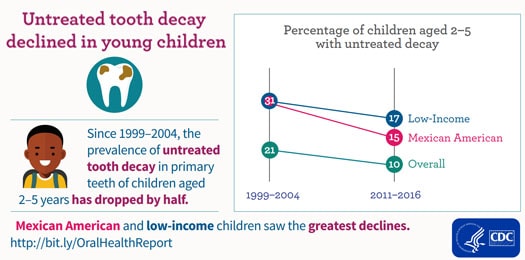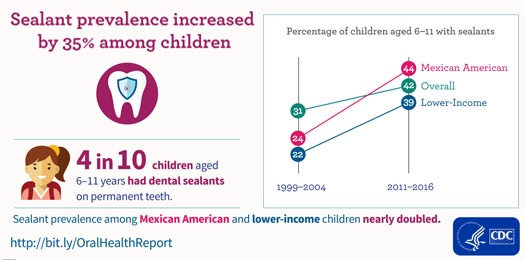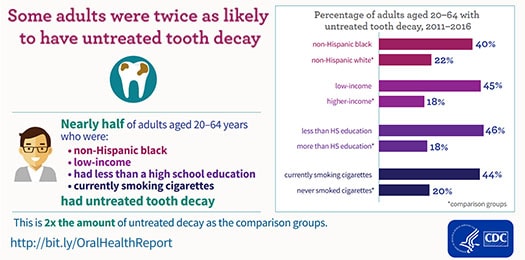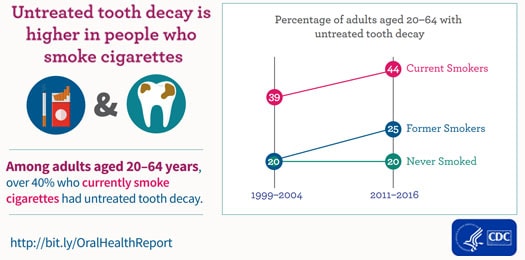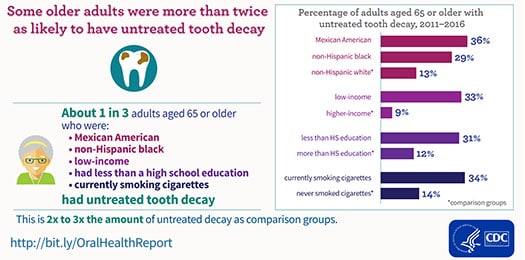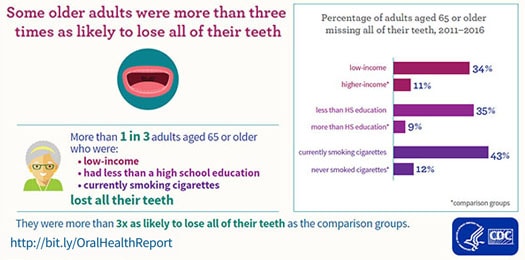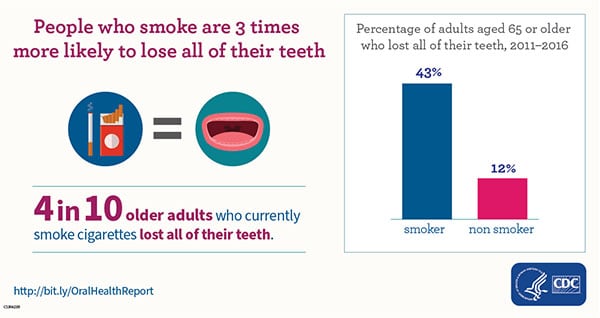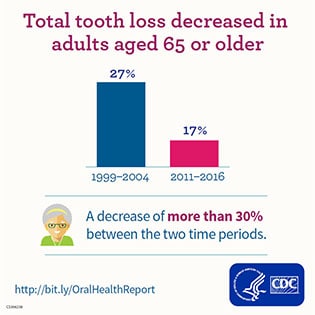Infographics source text
Some older adults were more than twice as likely to have untreated tooth decay
- Mexican-American: 36%
- non-Hispanic black: 29%
- non-Hispanic white*: 13%
- low-income: 33%
- higher-income*: 9%
- less than HS education: 31%
- more than HS education*: 12%
- currently smoking cigarettes: 34%
- never smoked cigarettes*: 14%
* comparison groups
Suggested Citation: Centers for Disease Control and Prevention. Oral Health Surveillance Report: Trends in Dental Caries and Sealants, Tooth Retention, and Edentulism, United States, 1999–2004 to 2011–2016. Atlanta, GA: Centers for Disease Control and Prevention, US Dept of Health and Human Services; 2019.

